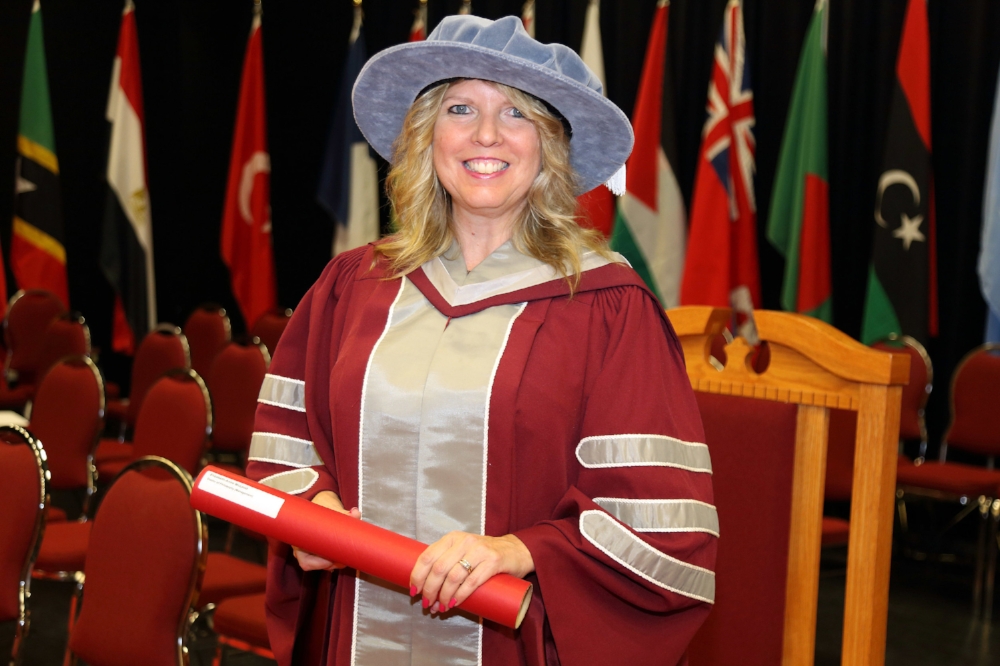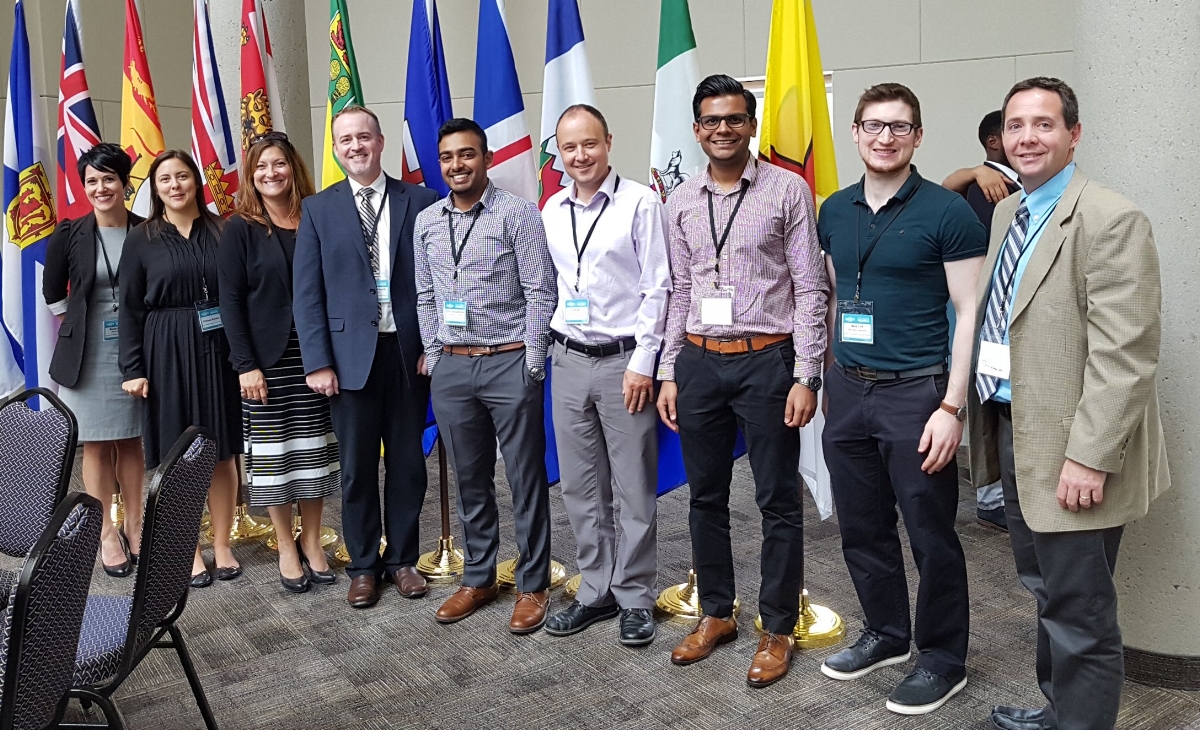“Balance is key,” says Elizabeth McLeod, about managing her life while earning her Doctor of Philosophy in Business Administration (Management) after 10 years of study and research.
Pursuing her latest degree and holding a full-time job kept Dr. McLeod juggling school, work, and home life, and “keeping all the balls in the air at once” was a challenge. A PhD typically takes four to five years to complete, and even longer on a part-time basis. The first two years consist of classes, followed by comprehensive exams, and then an extensive research project. During those years, vacations from her job were spent studying for exams, conducting research, and writing.
The epitome of a committed Santamarian, Dr. McLeod not only completed her Bachelor of Science in Chemistry and Master of Business Administration at Saint Mary’s, she has worked in the Faculty of Science for 27 years. Recent students will know her as a Lab Technician in Chemistry, but Dr. McLeod has also been a Neutron Activation Technician, a WHMIS Instructor, and has held roles in the Dean of Science Office and Co-operative Education.
Her PhD dissertation, which she successfully defended in June, is titled “The Role of Privacy Management in Brand Protection and Brand Value.” Her work focused on researching privacy issues and concerns with the use of a growing number of invasive technologies, and how these concerns can affect a brand’s value. Her research confirms that privacy management plays a significant role in brand protection and brand value.
Dr. McLeod is excited about completing her doctorate and she is grateful for the support she received throughout her degree from her supervisor Dr. Dawn Jutla, her PhD Director Dr. Albert Mills, and from her family, friends, and colleagues.
“Dr. McLeod’s dissertation provides a seminal publication empirically connecting organizational privacy behaviors, brand protection, and brand value,” says her supervisor Dr. Dawn Jutla.
For her research Dr. McLeod used a preliminary survey of privacy and security experts to discover what their top concerns are about privacy. The findings informed a formal survey instrument, which included both new and existing scales for the constructs that were later validated. This work contributes a new model that connects privacy practices, experienced harms, privacy concerns, brand protection, and brand value to management, management information systems, marketing and risk literatures. “Empirical testing of the hypotheses has confirmed that privacy management plays a significant role in brand protection and brand value,” writes Dr. McLeod in her abstract.
Saint Mary’s is a family affair for the McLeods. Elizabeth’s husband Ron is a Saint Mary’s part-time professor, and their two children have spent time on campus as well. Their son Connor received the Gold Medal when graduating with his Diploma of Engineering at Saint Mary’s, and their daughter Kaleigh started a Bachelor of Science this fall.
“Elizabeth has been on life’s journey, holding down a full-time job, raising teenage children, surviving car accidents, burying loved ones, supporting a creative entrepreneur-husband, and celebrating 10 birthdays while doing her dissertation,” said Dr. Jutla.
“Her story is one of perseverance producing great work with support from her village—the good people at Saint Mary’s University, especially Albert Mills, PhD Director, who believed in her too, and fellow PhD graduates like Anthony Yue. We are all so very proud of her!”












